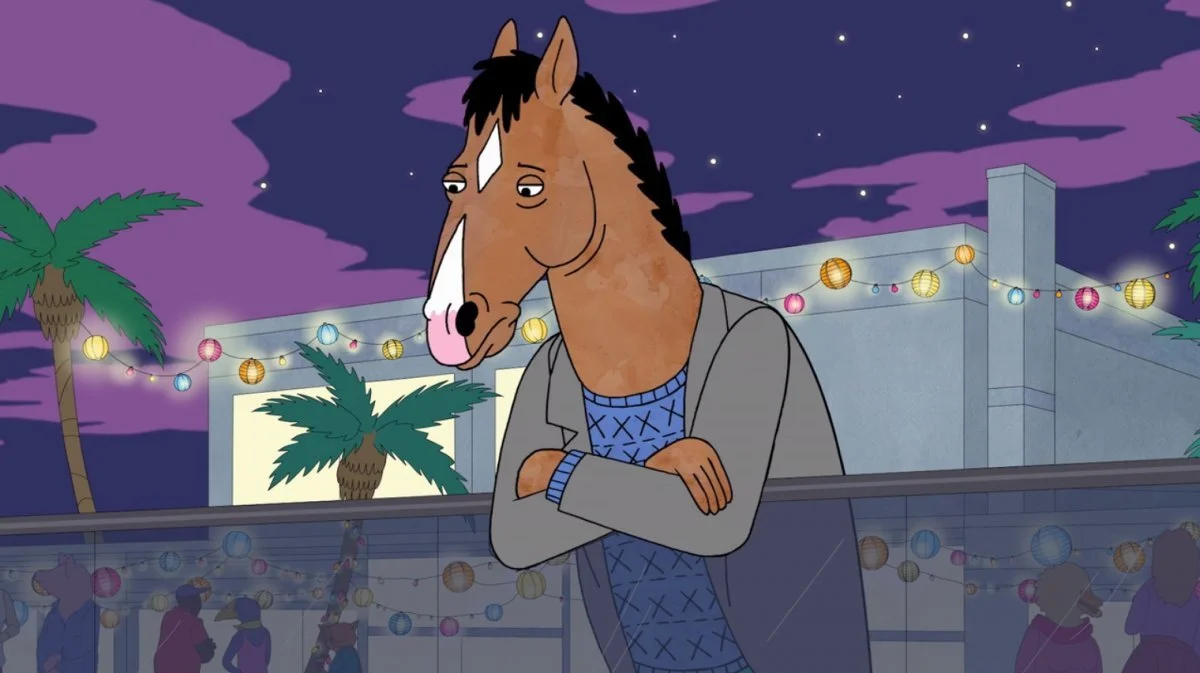BoJack Horseman: Understanding the Creative Mind
Creative work has a way of making artists and creative professionals feel everything deeply—the thrill of inspiration, the ache of self-doubt, and the heavy weight of vulnerability. Why does creativity bring on such intense highs and lows?
While we are in a post-Marvel world, and shows like The Franchise demonstrate working within larger cinematic universes and chaotic blockbuster productions in a satirical way, when BoJack Horseman came out (the show is five years old at this point) it resonated for many people especially artists and filmmakers as it is a classic portrayal of the “tortured creative” archetype. It captures the complex, often self-destructive patterns many creative individuals experience.
Creativity is a skill that we continually develop, but it is also an act of courage. Putting yourself out there is vulnerable and it means facing the risk of criticism or, even worse, indifference. This vulnerability is what can make creativity exhilarating but also profoundly draining, as creatives are constantly confronting the fear of rejection, failure, and not being "enough”. There are a few things we notice with BoJack and his creative mind as a result of this kind of dynamic.
“That Voice, The One That Tells You You're Worthless And Stupid And Ugly. It Goes Away, Right?"
Hollyhock - Season 4, Episode 6
In the show, BoJack constantly seeks validation from others and his career. His achievements never feel satisfying, and he’s stuck in a cycle of seeking approval, yet pushing it away—a dynamic that reflects the high emotional investment creatives often have in external recognition. Despite his successes, BoJack can’t help but focus on his shortcomings. He does not have an internal voice that provides validation. Creatives experience intense highs and lows in the struggle to balance authenticity with the need for external validation. The raw honesty that comes through in authentic creative work can be incredibly rewarding, but it also brings up the anxiety of public acceptance. Many creatives struggle with similar internal critics, feeling that they’re never "good enough" and struggling with imposter syndrome, even at the height of success.
BoJack’s character shows the tension between being profoundly vulnerable in his work yet highly guarded in his personal life. Creative professionals often put parts of themselves into their art, leaving them feeling exposed and struggling to balance their personal identity with their creative one. As a result, BoJack repeatedly sabotages his relationships and career, reflecting a trope often seen in creative personalities where high creativity is paired with high emotional volatility. This struggle mirrors the classic "tortured artist" concept, where periods of productivity and self-destruction are linked.
Inspiration can come in waves, bringing with it a rush of excitement and fulfillment. This “high” can feel addictive, making creatives chase that feeling repeatedly. However, just as the creative high is exhilarating, the creative block that often follows is equally frustrating. In BoJack Horseman, Bojack frequently faces creative slumps and moments of low motivation, particularly in his attempts to reinvent himself. He grapples with the painful reality that inspiration isn’t always readily available, leaving him feeling unfulfilled and questioning his purpose. When the well runs dry, the lows that follow can feel unbearable, making it difficult to separate one’s self-worth from one’s productivity. BoJack’s struggles mirror the struggles of many creatives who ride the highs of inspiration and feel lost in the lulls of creative block, illustrating the double-edged sword of an inspired life.
BoJack Horseman also explores the existential questions that plague many creatives: What is the purpose of their work? Do they deserve happiness? What legacy will they leave? Creatives often seek deep meaning in their work, which can lead to existential questioning, especially when self-worth becomes tied to their creations.
You may relate with some of these themes that BoJack struggles with. Therapy can be immensely beneficial for creative individuals like you—or anyone navigating the intense highs and lows that come with creative work. It offers a structured space to process complex emotions, develop self-awareness, and build healthier ways of managing vulnerability, self-doubt, and external pressures. By addressing underlying issues like imposter syndrome, perfectionism, and the need for external validation, therapy can guide someone like you toward a more balanced, fulfilling life where your creativity becomes a source of joy, rather than turmoil.
In our next article, we’ll dive into what creative people need to fully access their creativity—from cultivating healthy habits and building supportive environments to embracing the role of curiosity, unease, and rest. Whether you’re seeking creative flow, new inspiration, or deeper self-understanding, this next piece will offer actionable insights to help you nurture your creativity and thrive.
Stay tuned!


